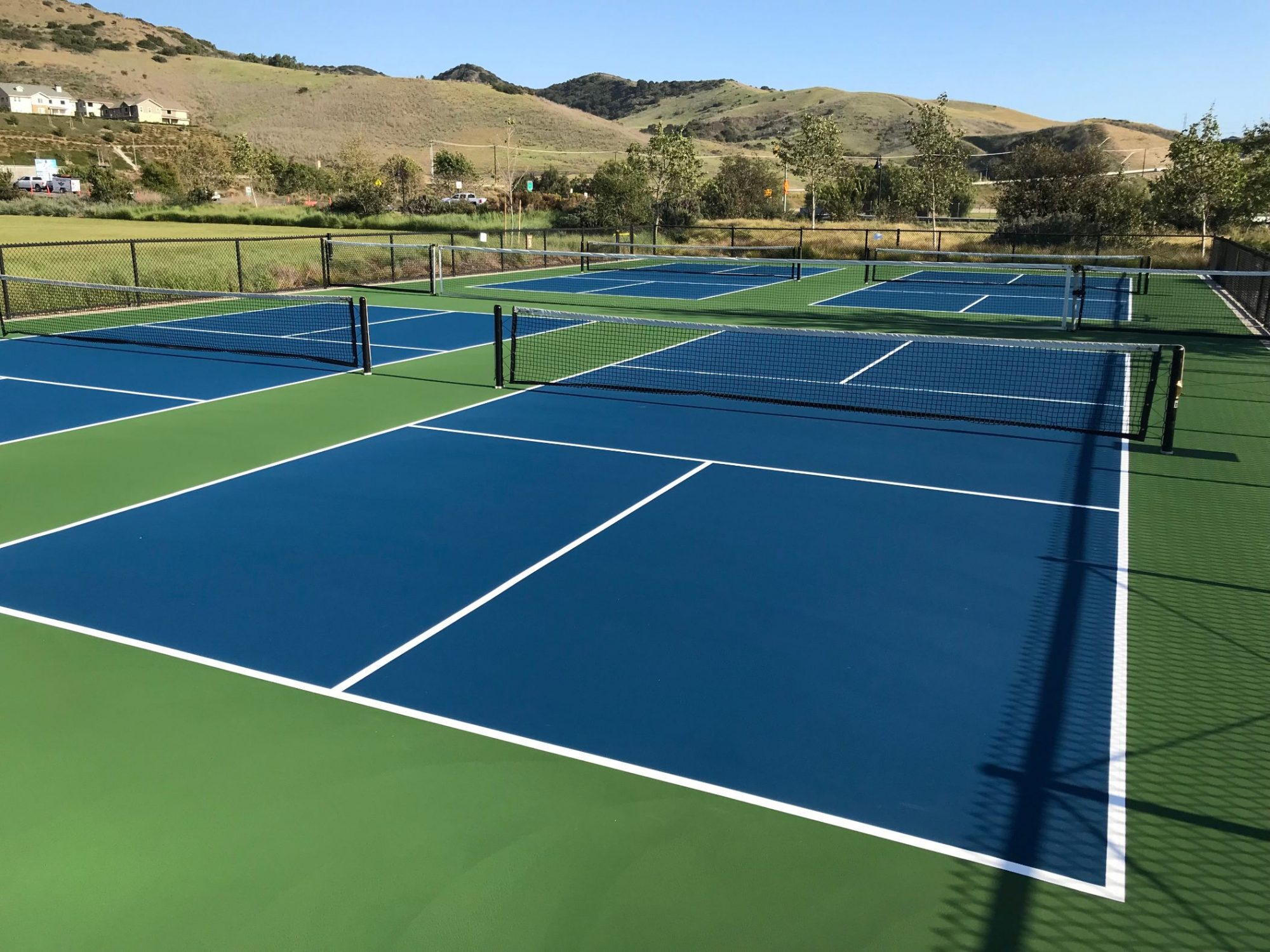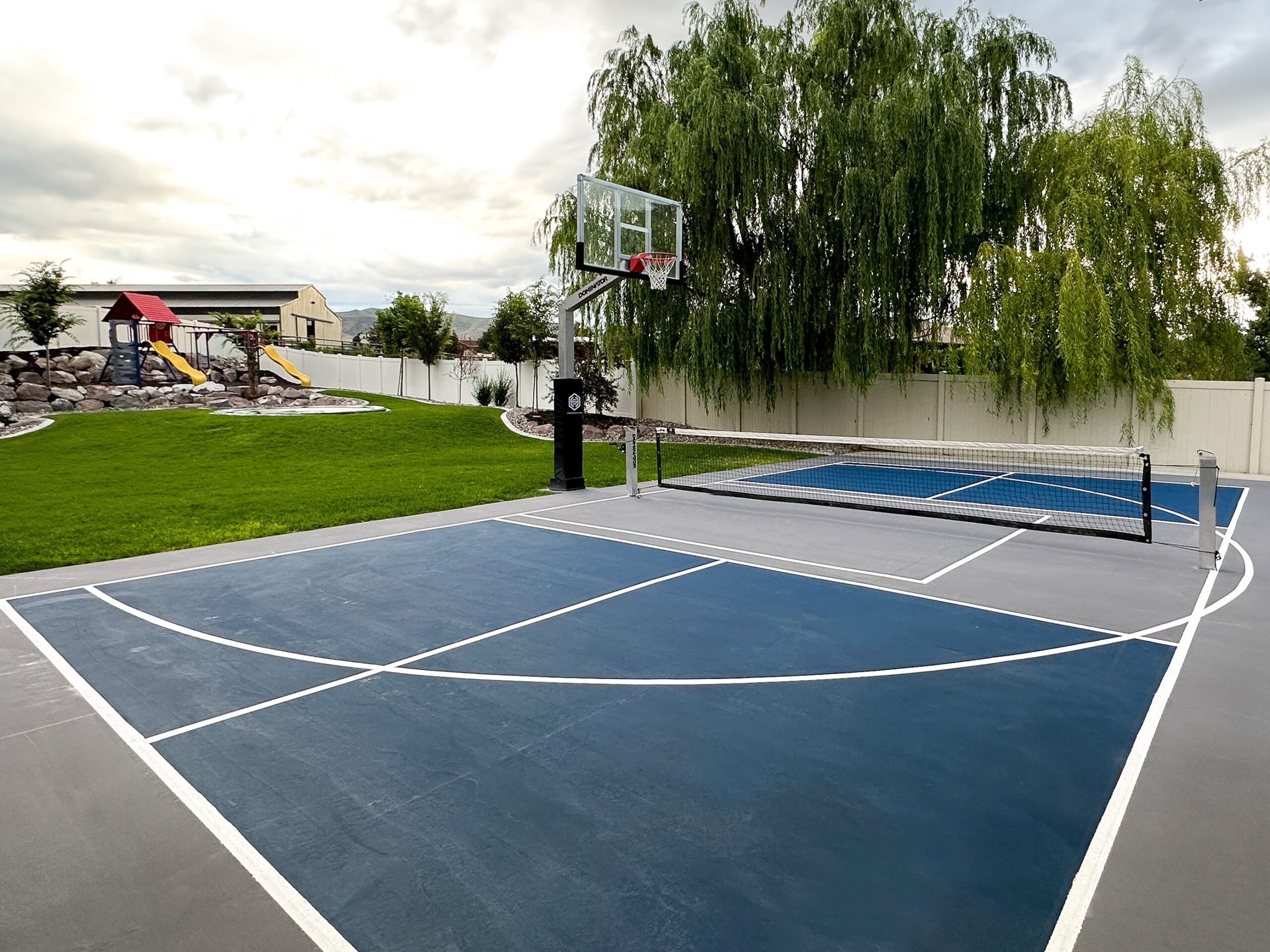Key Aspects in the Building And Construction of Pickleball Judiciaries: From Site Selection to Final Finishes
The building and construction of pickleball courts encompasses an array of vital elements, starting with the selection of a suitable website that balances accessibility with ecological considerations. Crucial elements such as court dimensions, surface area materials, and drainage systems substantially affect not only the quality of play but likewise the durability of the facility.
Site Option Requirements
When starting the building and construction of pickleball courts, it is important to pin down the site choice requirements that will make certain ideal playability and ease of access. The place needs to be conveniently obtainable for players, ideally positioned near suburbs or area facilities, to encourage engagement.
Moreover, the surface should be degree and secure, as unequal ground can bring about security threats and impact gameplay. Appropriate drainage is likewise critical; choosing a website with great water runoff will aid keep court problems throughout unfavorable climate.
An additional important factor to consider is the accessibility of utilities. Access to electrical energy and water is necessary for lighting and upkeep objectives. Additionally, proximity to car parking centers is essential, assisting in very easy accessibility for gamers and viewers alike.
Ecological elements can not be ignored; all-natural shade from trees can improve player convenience, while direct exposure to prevailing winds might interrupt play. Lastly, zoning regulations and community assistance need to be considered to make sure that the job aligns with neighborhood guidelines and receives the support it needs for effective execution. By carefully evaluating these criteria, stakeholders can create an inviting and practical atmosphere for pickleball fanatics.
Court Capacities and Format
To make sure ideal gameplay and adherence to guidelines, the dimensions and layout of pickleball courts should be carefully specified. A typical pickleball court determines 20 feet in width and 44 feet in length for both songs and increases play.
The net elevation is set at 36 inches at the sidelines and 34 inches at the facility, creating a minor dip that impacts round trajectory. Court markings are equally crucial; lines ought to be 2 inches broad and distinct in shade to ensure presence.
In addition, a barrier zone bordering the court is advisable, usually prolonging 5 to 10 feet past the sidelines and baselines to fit gamers' activities and boost safety. Appropriate design and measurements not just guarantee compliance with official regulations but additionally improve the overall having fun experience, suiting both entertainment and affordable play. Mindful preparation in these locations is vital to the successful construction of pickleball courts.
Surface Material Options
Choosing the right surface material for pickleball courts is crucial for ensuring optimum player efficiency and security. The choice of surface can substantially affect gameplay, including sphere bounce, traction, and player convenience.
There are several choices available, each with its distinct characteristics. Asphalt is a popular choice as a result of its toughness and low maintenance requirements. It offers a strong playing surface that can stand up to various climate conditions however might call for routine resurfacing.
Concrete is one more commonly used material, using excellent durability and a smooth finish. It enables consistent sphere bounce but can be tough on players' joints, making it less preferable for long-lasting play without correct cushioning.
For those seeking improved comfort and shock absorption, cushioned acrylic surface areas provide a feasible choice. These surfaces integrate a base layer with an acrylic topcoat, recommended you read giving boosted grip and a softer feeling, which is beneficial for minimizing the risk of injuries.
Last but not least, artificial turf is getting grip, specifically for multi-purpose centers. Its versatility and lower upkeep requires make it an attractive choice, though it might not offer the same ball reaction as conventional tough courts. Careful factor to consider of these options will ensure an optimal playing atmosphere.
Water Drainage and Illumination Considerations
Proper drain and reliable lighting are essential parts in the building and construction of pickleball courts, dramatically influencing both playability and security. Adequate drainage systems avoid water buildup, which can cause unsafe surfaces and damages to the court structure. A well-designed water drainage plan includes sloped surface areas and appropriate products to promote water stream away from the playing area - Illinois and midwest. This not just protects the honesty of the court but additionally minimizes downtime as a result of poor climate condition.
Lights is just as crucial, especially for courts intended for evening use. Appropriate illumination improves visibility, guaranteeing that gamers can see the round plainly and lowering the risk of mishaps. The placement of lighting fixtures must be tactically prepared to get rid of shadows and provide even distribution of light across the court. LED lights are advised for their energy performance and durability, providing brilliant illumination while reducing operational costs.

Last Finishes and Maintenance
After addressing drain and lights factors to consider, attention transforms to the final surfaces and recurring maintenance of pickleball courts. Usual alternatives include acrylic finishings and specialized sporting activities surfaces that provide optimum traction and cushioning.

Seasonal upkeep may consist of resurfacing every few years, relying on use and environmental factors. Effectively preserving webs, court lines, and bordering areas is equally vital to supply a safe and satisfying playing experience. By spending in quality surfaces and sticking you can check here to an organized maintenance schedule, facility proprietors can ensure their pickleball courts stay in excellent condition for years ahead.
Final Thought
In verdict, the effective building of pickleball courts pivots on meticulous attention to a number of vital aspects. Quality surfaces and a robust maintenance timetable are vital for protecting the my site court's problem, boosting the general experience for gamers and viewers alike.